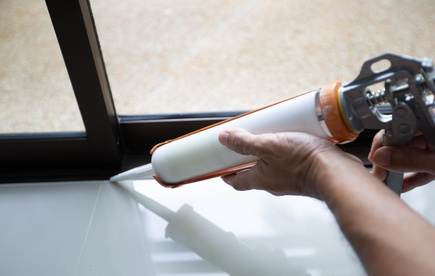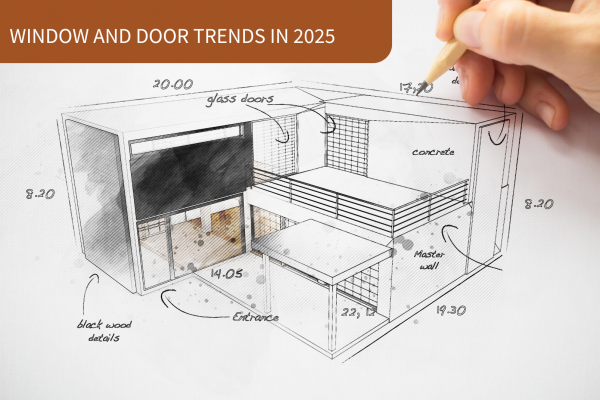Jambs are window recesses where windows will be installed in the future. They are measured in order to install new joinery or replace the existing one. The correct measurement of the window jambs is one of the most important activities that determine the correct purchase of window joinery. The size of the window should be such as to allow for correct positioning and levelling. To maintain proper functionality of the window, adequate space between the window joinery and the wall must be maintained. Find out how to measure a window recess correctly.
Purpose of window recess measurements
The primary aim is of course the installation of the windows, but the way in which the measurements are taken and the guidelines to which particular attention should be given depend on the specifics of the particular job. It can therefore be:
- measuring the jamb in a new building
- the frame width should be approximately 3 cm* less than the width of the jamb,
- the frame height should be approximately 5 cm* less than the jamb height.
After the window has been physically installed, approx. 1.5 cm of free space will be left at the top and sides of the window frame for the installation foam, and approx. 3.5 cm of free space at the bottom for the windowsill;
- jamb measurement for window replacement
- the jamb should be measured from the side of the room and about 2 cm* of the width and about 1.5 cm* of the height should be subtracted
*the given dimensions are approximate
Measurement accuracy
When measuring a window recess, it is important to consider not only the actual performance of the recess in question, but also its readiness for the installation or replacement of windows. This is also the moment when any imperfections that may have arisen during the construction of the building can be repaired. The priorities are:
- removal of any contaminants that would give false measurements, and correction of construction errors, for example by grinding down individual sections or entire jambs;
- achieving right angles at the corners of the jambs and thus optimally levelled bottom and top edges, as well as straight side edges (the entire window recesses must be re-measured after the work has been finished);
- determining what the dimensions of window profiles suitable for given jamb should be, and assessing whether the specifics of the selected windows will be compatible with the properties of the walls in which they will ultimately be installed.
Jambs measurement - how to measure a window recess?
The easiest thing to do is to take a measurement in a newly constructed building in its raw state. Measure the width and height of the window recess. Both width and height are measured exactly in several places and in case of discrepancies the smallest dimension is taken into account.
It is best to measure the width of the hole at the top, the middle and the bottom. Do the same with the height - measure to the left of the hole, in the middle and to the right.
The next step is to subtract approx. 3 cm from the width of the jamb in turn, and approx. 5 cm from the height. The dimension that remains is the actual measurement of the window that will be appropriate for our window recess. The distance between the window and the jamb is called window reveal. It allows for correct positioning of the window in the jamb, sealing of the joint and installation of window sills: external and internal.
Measurements should be taken with a metal rolling measure. It is much more stable than a dressmaker's tape measure, ruler and other non-professional measuring accessories. It is advisable to choose a tape measure marked on both sides, for greater comfort in use.
REMEMBER: Accuracy is the key issue.

Measurement of a window recess
WINDOWS WITH SILL
The choice of window joinery with the best thermal insulation properties will not fulfil its function if mistakes are made during window installation, especially in the areas under the sill. If you opt for windows with an internal or external window sill, or both, the overall dimension of the window recess must include the corresponding dimension. The window reveal should be between 3 cm and 5 cm.
Also read:
Consequences of faulty window measurement
A wrongly measured window means very often incorrect installation, difficulties with opening and closing, and even the risk of walls getting wet. Mistakes at the measuring stage can therefore result:
- ordering a too large window - Once the window has been inserted into the jamb, there will be no room for the necessary window reveals. This means that incomplete sealing is required, with a risk of leakage and thermal bridging*.
* Thermal bridges are places in the external partitions of a building which have an increased thermal conductivity coefficient. This is where the increased escape of heat energy from the building happens.
- ordering a too small window - in this case there will be too much window reveals. As in the first case, here too it will be difficult to ensure that the window is properly sealed. It is also almost certain that cracks will form through which moisture will penetrate, causing the building wall to become damp. A window that is too small also means that it is impossible to choose the right way to fix it firmly in the hole.

Sealing a window
How to measure a window by yourself?
Well-measured windows are the first, extremely important step towards their correct installation. Properly selected windows are a guarantee of tightness, aesthetic appearance and trouble-free and efficient operation for years. This is why the correct measurement of the window recess is so important: whether prior to the installation of unfinished windows or the replacement of joinery with new joinery. If you don't want to take on this challenge on your own, get a window installation company to help.
Are you planning to buy windows and have doubts about the correct measurements or choosing the right window joinery?
Contact our consultant:






